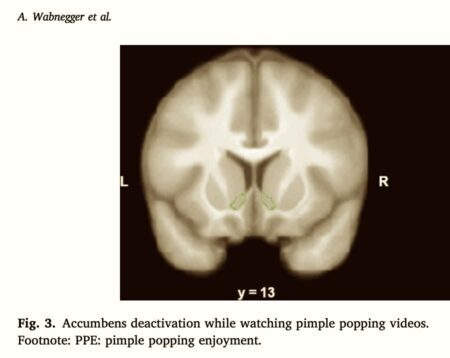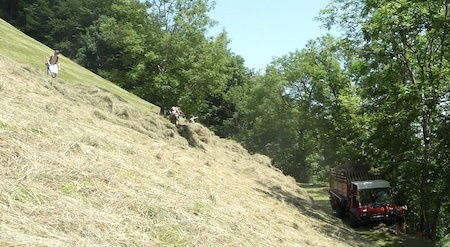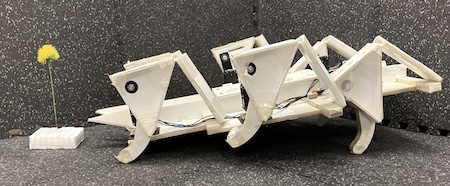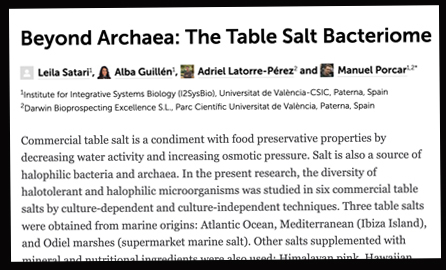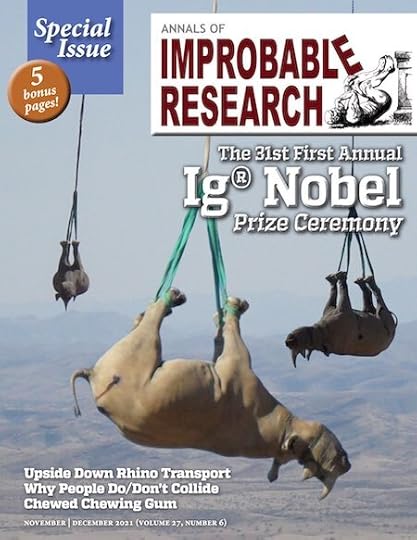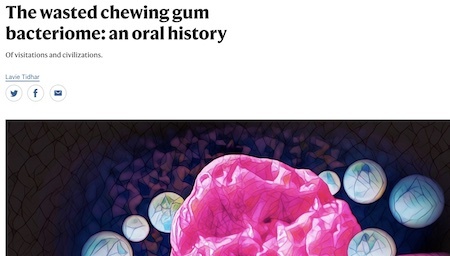Marc Abrahams's Blog, page 64
December 14, 2021
Enjoyment of Watching Pimple Popping Videos: An fMRI Investigation
Pimples take center stage in the brain, in this new study:
“Enjoyment of Watching Pimple Popping Videos: An fMRI Investigation,” Albert Wabnegger, Carina Höfler, Thomas Zussner, Harald H Freudenthaler, Anne Schienle, Behavioural Brain Research, vol. 402, March 26, 2021, 113129. The authors, at the University of Graz, Austria, explain:
We administered a total of 96 video clips from three categories: Pimple Popping (PP), Water Fountains (WF), and Steam Cleaning (SC). The PP videos showed a pimple or blackhead that was opened to squeeze out the pus or sebum. The female participants (mean age: 24 years) were assigned to one of two groups: females who reported to enjoy watching PP (PPE_high; n = 38) and those with little enjoyment (PPE_low; n = 42). We analyzed brain activity in regions of interest (ROI) involved in the encoding of pleasure and aversion (e.g., nucleus accumbens (NAc),
Conclusions — A specific pattern of brain activity and connectivity that involves the NAc and insula (coding of aversion/pleasure) and the frontopolar region (prediction of outcomes of motor decisions) is associated with the enjoyment of PP videos.
(Thanks to Frédéric Flamant for bringing this to our attention.)
Leaf Blowers Versus Rakes
Leaf blowers, after years of provoking dead foliage and lively arguments, eventually provoked research efforts about their effect on certain aspects of the world:
“Leaf blowers as an alternative to rakes: impact on vegetation after four years,” Nina Richner, Leonie Durocher, Hanspeter Rohrer, and Thomas Walter, Agrarforschung Schweiz, vol. 5, no. 5, May 2014, pp. 188-195. the authors, at Agroscope Reckenholz-Tänikon Research Station, Switzerland, report:
“In the mountains, hay harvesting represents a significant task for farmers. To make this job easier and speed up the harvest, farmers are gradually replacing rakes with leaf blowers. The Swiss nature conservancy organisation Pro Natura and the Agriculture and Agri-Food Research Station Agroscope are currently evaluating the potential effects of leaf blowers on the plant diversity of dry grasslands – habitats which are already under severe threat. In this study, plant surveys are carried out annually on a meadow where plots with the two types of harvest alternate. The analysis of the data collected in 2013 does not attest to any impact of blowers on plant diversity species composition, the presence of target or characteristic species, or moss cover. By contrast, position on the slope has an influence on the number of species, which is higher at the bottom of the slope on all plots. Moss cover is greater at the top of the blown plots and at the bottom of the raked plots.”
Full versions of the study are available, one in German, one in French:
December 13, 2021
Where All the Flowers Have Gone, Maybe
An old song may have a new answer. The song is Pete Seeger’s “Where Have All the Flowers Gone?” The answer, maybe, is suggested by the new study:
“Dandelion-Picking Legged Robot,” Sandilya Sai Garimella and Shai Revzen, arXiv:2112.05383, 2021. (Thanks to Mason Porter for bringing this to our attention.) The authors, at the University of Michigan, report:
“Agriculture is currently undergoing a robotics revolution, but robots using wheeled or treads suffer from known disadvantages: they are unable to move over rubble and steep or loose ground, and they trample continuous strips of land thereby reducing the viable crop area…. We propose the use of multilegged robots using low-degree-of-freedom (low-DoF) legs and demonstrate our approach with a lawn pest control task: picking dandelions using our inexpensive and easy to fabricate BigANT robot.”
This video shows perhaps an old, pre-robotics performance of the song:
How to pronounce ‘A Drunk Man Looks At A Thistle’
I amna fou’ sae muckle as tired – deid dune.
It’s gey and hard wark coupin’ gless for gless
Wi’ Cruivie and Gilsanquhar and the like,
And I’m no’ juist as bauld as aince I wes.
 If you recognize the first stanza from Hugh MacDiarmid’s 1926 poem ‘A Drunk Man Looks At A Thistle’ you may also be interested in learning how to pronounce ‘A Drunk Man Looks At A Thistle’
If you recognize the first stanza from Hugh MacDiarmid’s 1926 poem ‘A Drunk Man Looks At A Thistle’ you may also be interested in learning how to pronounce ‘A Drunk Man Looks At A Thistle’
If so, consult Pronouncewiki.com where you’ll find examples using various international accents. [Note: Some voices, like the Chinese(Hong Kong) accent, are less than 100% functional, but many do work – may we recommend, for example, the French (France) accent.]
BONUS: For collectors – a hardback copy of ‘A Drunk Man Looks At A Thistle’ is currently available from Alexander Rare Books at $750
December 11, 2021
Continuous Burning of Fake Feces
“May We Recommend: Continuous Burning of Fake Feces” is a featured revue article in the special Ig Nobel Prizes issue (volume 27, number 6) of the magazine Annals of Improbable Research.
Read this article, free, on the web.
Then, if research about improbable reality inspires you, subscribe to the magazine, or buy individual back issues.
December 10, 2021
The Table Salt Bacteriome: Abundant Life in Your Salt Shaker
The team (most of it) that won the 2001 Ig Nobel Prize for Ecology—because they analyzed the bacteria dwelling in discarded wads of chewed chewing gum — has now also analyzed life forms that live in various kinds of table salt. Details are in the study:
“Beyond Archaea: The Table Salt Bacteriome,” Leila Satari, Alba Guillén, Adriel Latorre-Pérez, and Manuel Porcar, Frontiers in Microbiology, epub 2021. The team, at Universitat de València-CSIC, Spain, explains:
Commercial table salt is a condiment with food preservative properties by decreasing water activity and increasing osmotic pressure. Salt is also a source of halophilic bacteria and archaea. In the present research, the diversity of halotolerant and halophilic microorganisms was studied in six commercial table salts by culture-dependent and culture-independent techniques. Three table salts were obtained from marine origins: Atlantic Ocean, Mediterranean (Ibiza Island), and Odiel marshes (supermarket marine salt). Other salts supplemented with mineral and nutritional ingredients were also used: Himalayan pink, Hawaiian black, and one with dried vegetables known as Viking salt…. A collection of 76 halotolerant and halophilic bacterial and haloarchaeal species was set by culturing on different media with a broad range of salinity and nutrient composition. Comparing the results of 16S rRNA gene metataxonomic and culturomics revealed that culturable bacteria Acinetobacter, Aquibacillus, Bacillus, Brevundimonas, Fictibacillus, Gracilibacillus, Halobacillus, Micrococcus, Oceanobacillus, Salibacterium, Salinibacter, Terribacillus, Thalassobacillus, and also Archaea Haloarcula, Halobacterium, and Halorubrum were identified at least in one sample by both methods. Our results show that salts from marine origins are dominated by Archaea, whereas salts from other sources or salt supplemented with ingredients are dominated by bacteria.
December 9, 2021
Prize-Winning Oil Spill Helps Individual Save Money
ProPublica gives a detailed report about a little-noticed consequence of the oil spill that led to an Ig Nobel Chemistry Prize. The ProPublica report begins:
A Massive Oil Spill Helped One Billionaire Avoid Paying Income Tax for 14 Years
After the Deepwater Horizon offshore drilling rig exploded in 2010, environmentalists surveying the damage in the Gulf of Mexico came upon a mystery. The water had oil slicks that, because of the currents, couldn’t have originated from the site of the notorious accident.
With the help of satellite imagery, they figured out that oil was leaking from a different spill, a six-year-old disaster the public knew almost nothing about. In September 2004, Hurricane Ivan had swept the legs out from under a 40-story oil-drilling platform operated by a company called Taylor Energy, causing a leak that continues to this day. It is the longest-running — and by one estimate, the largest — U.S. oil spill ever recorded, a contentious saga that prompted a recent “60 Minutes” segment.
It’s been an environmental nightmare for the region — but a massive tax bonanza for Phyllis Taylor, the owner of Taylor Energy and the fallen rig….
The 2010 Ig Nobel Chemistry Prize was awarded to Eric Adams of MIT, Scott Socolofsky of Texas A&M University, Stephen Masutani of the University of Hawaii, and BP [British Petroleum], for disproving the old belief that oil and water don’t mix. The achievement is documented in the study “Review of Deep Oil Spill Modeling Activity Supported by the Deep Spill JIP and Offshore Operator’s Committee. Final Report,” Eric Adams and Scott Socolofsky, 2005.
Special Ig Nobel Prizes issue of the magazine
The special Ig Nobel issue (volume 27, number 6) of the magazine, Annals of Improbable Research, has flown its way to subscribers. It gives copious details of the 31st First Annual Ig Nobel Prize ceremony, and of the winners.
This special issue, like many other special issues of the magazine, is also available for purchase. All the magazine issues are in the form of downloadable PDFs. PDFs minimize paper cuts.
Makes People Laugh, Then ThinkThe Ig Nobel Prizes, as you may well know, honor achievements that make people LAUGH, then THINK. The magazine, we surmise, does the same.
What’s Inside, More or LessThis issue includes these articles (some of which you can read, free, on this web site), and a bit more:
The 31st First Annual Ig Nobel Prize Ceremony
The 2021 Ig Nobel Prize Winners
A Grizzly (Bear) Note
The Acceptance Speeches
The 24/7 Lectures
Opera Libretto: “A Bridge Between People”
Ig Nobel Limericks: Stinky Feet, Community Dad
Ig® and Beyond: Speaking Up to Superiors, Dogs and Magnets
Improbable Research Reviews
Improbable Research: Bats, Rats, and Flies, Indoors
Medical: Deathly Kiss, Ritual Enema
May We Recommend: Continuous Burning of Fake Feces
News & Notes
AIR Vents: Dr. Ralph O. Clock’s 12-Year Study
A Gummy Tribute to the 2021 Ig Nobel Ecology Prize Winners
Lavie Tridhar writes, in Nature, a gummy tribute of sorts to the 2021 Ig Nobel Ecology Prize winners, Leila Satari, Alba Guillén, Àngela Vidal-Verdú, and Manuel Porcar, who used genetic analysis to identify the different species of bacteria that reside in wads of discarded chewing gum stuck on pavements in various countries. Tridhar’s tribute begins:
The wasted chewing gum bacteriome: an oral history
In the beginning the world was formed, and for a long time it was perfect in shape but lifeless. The world travelled through the void in that form, until great forces worked upon its pliable body. The priests speak of entities larger than universes, with teeth greater than worlds. They speak of a Masticating and whisper of the Great Chewer, who transformed the world and first seeded it with life.
As scientists, we cannot confirm this hypothesis. We have found no evidence of giant aliens. Our world is ordered, full of life and ancient. We know that the Universe is filled with life similar to ours. That others have visited our world and that some of us, in turn, have ventured out on voyages of exploration and conquest. We believe other worlds like ours exist in the Universe in great profusion, and it is even possible not all of them are made of gum.
2.
Following the Great Chewing, the world travelled through the void…
Read the entire essay at Nature.
December 8, 2021
Mauricio-José Schwarz joins Hair Club for Science Journalists (LFFFHCfSJ)
Mauricio-José Schwarz has joined the The Luxuriant Flowing, Former, or Facial Hair Club for Science Journalists (LFFFHCfSJ). He says:
(LFFFHCfSJ). He says:
I have been writing, promoting and divulging science and critical thinking since 1976, working in major Mexican newspapers, radio and TV. I currently and for the past 17 years write a science page every Saturday for the Spanish newspaper “El Correo”. I also publish two YouTube channels, one on general critical thinking (youtube.com/tionoc) and one strictly on science (youtube.com/cosasquesabemos). I have also written science fiction stories, poetry and three crime novels while also writing songs, playing the guitar and taking photographs, and have taught journalism, creative writing and English. Although a few years back I finally cut my luxuriant flowing hair (first photo), my luxuriant flowing beard makes up for it quite nicely. I also read Steven Pinker with gusto, which may give me additional points.
Mauricio-José Schwarz, LFHCfS
Independent Science Journalist
Gijón, Spain

Marc Abrahams's Blog
- Marc Abrahams's profile
- 14 followers


